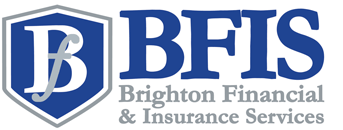California Marketing & Advertising Agency Insurance

9:00am - 6:00pm Mon-Fri
Will Reply in 15min*
Top 3 Recommended Policies
Index
Why Insurance is Vital for Marketing and Advertising Agencies
Types of Insurance Essential for California Advertising Agencies
Market Trends Impacting Insurance Needs for Advertising Agencies
How Marketing Impacts Insurance Considerations for Independent Agencies
Choosing the Right Insurance Provider in California
Future Outlook: Insurance and Advertising in California
California’s marketing and advertising landscape is booming, with the industry projected to reach a market size of nearly $15 billion by 2025. This rapid growth reflects not only the state’s vibrant economy but also the increasing demand for innovative advertising solutions. However, with growth comes risk, and for agencies operating in this dynamic environment, securing the right insurance coverage is crucial to protect their business assets, reputation, and future.
Understanding the nuances of insurance tailored specifically for marketing and advertising agencies in California is essential. This guide dives deep into why insurance matters, what types of coverage are most relevant, and how agencies can navigate the complex insurance market to safeguard their operations.
For a comprehensive view of California’s advertising industry growth and trends, the
IBISWorld report on California’s Advertising Agencies
offers valuable insights.
Why Insurance is Vital for Marketing and Advertising Agencies
Marketing and advertising agencies face unique risks that make insurance not just a precaution but a necessity. These risks range from intellectual property disputes and client lawsuits to data breaches and employee-related claims. Without proper insurance, agencies can be exposed to significant financial losses that could jeopardize their survival.
One key reason insurance is critical is the nature of the work itself. Agencies often create original content, manage sensitive client data, and execute campaigns that impact brand reputations. Mistakes or misunderstandings can lead to costly legal battles. For example, copyright infringement claims or accusations of misleading advertising can quickly escalate into expensive lawsuits.
Moreover, the competitive environment in California—with over 16,500 businesses in the advertising sector—means agencies must maintain trust and reliability to retain clients. Insurance coverage acts as a safety net, reassuring clients that the agency is prepared for unforeseen challenges.
In addition to legal risks, agencies also face the potential for reputational damage due to negative publicity or failed campaigns. A single misstep can lead to a public relations crisis that not only affects the agency but also its clients. Having liability insurance can help mitigate the financial repercussions of such incidents, allowing agencies to focus on recovery and rebuilding their reputation rather than being bogged down by legal fees and settlements. Furthermore, many clients now require proof of insurance before entering into contracts, making it a crucial factor in securing new business.
Another important aspect to consider is the evolving landscape of digital marketing, where data privacy regulations are becoming increasingly stringent. Agencies that handle personal data must comply with laws like the GDPR or CCPA, and a failure to do so can result in hefty fines and legal action. Cyber liability insurance can provide coverage for data breaches and help agencies navigate the complexities of compliance, ensuring that they are not only protecting their clients but also safeguarding their own operations against potential financial fallout from regulatory penalties.

Types of Insurance Essential for California Advertising Agencies
Professional Liability Insurance (Errors & Omissions)
Professional liability insurance is arguably the most important coverage for marketing and advertising firms. It protects agencies against claims of negligence, errors, or omissions in the services they provide. For example, if a campaign fails to deliver promised results or unintentionally infringes on intellectual property rights, this insurance helps cover legal fees and settlements.
Given the complexity of advertising contracts and the potential for disputes, this coverage is a must-have for agencies aiming to mitigate risks linked to their professional services. Moreover, as the advertising landscape evolves with new technologies and platforms, the potential for miscommunication or misunderstanding increases. Agencies must be vigilant in ensuring that their creative strategies align with client expectations and legal standards, further underscoring the necessity of professional liability insurance. This coverage not only safeguards against financial loss but also enhances the agency's credibility, reassuring clients that they are protected in the event of unforeseen issues.
General Liability Insurance
This insurance covers bodily injury, property damage, and advertising injury claims. Advertising injury is particularly relevant—it includes libel, slander, copyright infringement, and other offenses related to advertising content. General liability insurance helps protect agencies from claims arising from their day-to-day business operations.
California’s diverse business environment means agencies often interact with various clients and vendors, increasing exposure to liability risks that this insurance can help manage. Furthermore, the state's unique regulations and cultural nuances necessitate a keen understanding of local laws, which can vary significantly from other regions. Agencies must navigate these complexities while ensuring that their marketing materials do not inadvertently offend or misrepresent any group. General liability insurance thus serves as a crucial safety net, allowing agencies to focus on creativity and innovation without the constant worry of potential legal repercussions.
Cyber Liability Insurance
With the rise of digital marketing and data-driven campaigns, cyber liability insurance has become increasingly important. Agencies handle vast amounts of client data, making them targets for cyberattacks and data breaches. Cyber liability insurance covers costs related to data loss, breach notifications, and legal liabilities stemming from cyber incidents.
Considering the growing importance of online advertising and data security, this coverage is essential for protecting both the agency and its clients. As the frequency and sophistication of cyber threats continue to rise, agencies must also invest in robust cybersecurity measures. This includes employee training on data protection practices and implementing advanced security protocols. Cyber liability insurance not only provides financial protection but also serves as a testament to an agency's commitment to safeguarding client information, which can be a significant competitive advantage in a crowded marketplace.
Workers’ Compensation and Employment Practices Liability
California law requires businesses with employees to carry workers’ compensation insurance, which covers medical expenses and lost wages if an employee is injured on the job. Additionally, employment practices liability insurance protects agencies from claims related to wrongful termination, discrimination, harassment, and other employment-related issues.
Given the competitive nature of the advertising industry, maintaining a positive workplace environment and being prepared for employment disputes is critical. The creative process often involves collaboration and brainstorming, which can sometimes lead to interpersonal conflicts. Agencies must foster a culture of respect and inclusivity to minimize the risk of employment-related claims. Furthermore, as the workforce becomes increasingly diverse, agencies should prioritize training and policies that promote equity and prevent discrimination. By investing in both workers’ compensation and employment practices liability insurance, agencies not only comply with legal requirements but also cultivate a supportive environment that attracts top talent and enhances overall productivity.
Market Trends Impacting Insurance Needs for Advertising Agencies
The advertising industry in California is not only growing but evolving rapidly. According to IBISWorld, the sector has been expanding at an average annual rate of 4.1% from 2020 to 2025. This growth reflects increased demand for digital marketing, influencer campaigns, and data analytics services.
As agencies diversify their offerings, the range of risks they face also broadens. For instance, the surge in digital advertising heightens exposure to cyber threats and intellectual property challenges. Agencies must adapt their insurance portfolios accordingly to cover these emerging risks.
Furthermore, the insurance advertising market itself is growing, with projections showing an increase from $12.77 billion in 2024 to $14.12 billion in 2025 at a compound annual growth rate of 10.6%. This trend underscores how intertwined insurance and advertising industries are, particularly in California’s robust market.
In addition to digital advancements, the rise of social media platforms has transformed how advertising agencies operate. With the ability to reach vast audiences instantaneously, agencies are now tasked with navigating the complexities of social media regulations and the potential for reputational damage. This shift necessitates specialized insurance products that address the unique liabilities associated with social media campaigns, including defamation claims and the unauthorized use of copyrighted materials.
Moreover, the increasing reliance on data analytics has prompted agencies to prioritize data security and privacy compliance. As they collect and analyze consumer data to tailor their marketing strategies, the risk of data breaches becomes more pronounced. Agencies must not only invest in robust cybersecurity measures but also ensure they have adequate cyber liability insurance to protect against potential losses stemming from data breaches or regulatory fines. This evolving landscape highlights the need for advertising agencies to stay informed about current trends and adjust their insurance strategies proactively to mitigate risks effectively.
How Marketing Impacts Insurance Considerations for Independent Agencies
Independent insurance agencies in California have reported significant revenue boosts thanks to effective marketing strategies. Nearly 40% of these agencies noted that marketing increased their income by at least 25%, with over half experiencing revenue growth exceeding 50%, according to California Broker Magazine.
This powerful impact of marketing on business growth also translates into insurance considerations. Agencies that actively market themselves may face increased risks related to advertising content and client expectations, making comprehensive professional liability and advertising injury coverage even more critical. For instance, if an agency promotes a particular insurance product that fails to meet client expectations, they could be held liable for misleading advertising, which emphasizes the need for clear and truthful marketing practices.
Moreover, as agencies expand their client base and services, they must reassess their insurance needs regularly to ensure adequate protection against evolving risks. This includes not only evaluating their general liability and property coverage but also considering cyber liability insurance, especially as digital marketing becomes a cornerstone of agency outreach. With the rise of online interactions, agencies are more vulnerable to data breaches and cyberattacks, making it essential to safeguard client information and maintain trust in their services.
Furthermore, the competitive landscape of the insurance market necessitates that independent agencies stay ahead of the curve with their marketing techniques. Utilizing social media platforms, search engine optimization (SEO), and targeted advertising campaigns can significantly enhance visibility and attract new clients. However, these strategies also require agencies to be vigilant about compliance with advertising regulations and consumer protection laws, which can vary by state. This adds another layer of complexity to their insurance considerations, as agencies must ensure that their marketing efforts do not inadvertently expose them to legal challenges.

Choosing the Right Insurance Provider in California
Selecting an insurance provider familiar with the California marketing and advertising landscape is vital. Providers who understand the specific challenges of this industry can offer tailored policies that address unique risks, such as intellectual property disputes or cyber threats. The dynamic nature of California's market, with its diverse industries and innovative startups, necessitates an insurance partner who can adapt quickly to changes and provide proactive solutions.
The California Department of Insurance provides valuable resources, including annual Market Share Reports that detail the performance of licensed insurers in the state. These reports can help agencies identify reputable providers with strong financial stability and customer service records. More information can be found on the California Department of Insurance website. Furthermore, understanding the claims process and the average turnaround time for different insurers can be crucial in making an informed decision. A provider with a proven track record of swift claims resolution can significantly reduce stress during challenging times.
Additionally, agencies should consider working with brokers who specialize in marketing and advertising insurance, as they can navigate complex policy options and negotiate favorable terms. These brokers often have insights into emerging trends and risks specific to the advertising world, such as the impact of social media regulations or the growing importance of data privacy compliance. By leveraging their expertise, agencies can secure comprehensive coverage that not only protects against traditional risks but also addresses the evolving landscape of digital marketing and advertising.
Moreover, it's essential to evaluate the insurer's customer support and claims handling process. Agencies should look for providers that offer 24/7 support and have a reputation for being responsive and helpful during claims. Reading customer reviews and testimonials can provide additional insights into the insurer's reliability and service quality. Engaging with other marketing professionals through industry forums or local networking events can also yield recommendations for insurance providers that have successfully met the needs of similar businesses.
Future Outlook: Insurance and Advertising in California
The California insurance industry itself is projected to reach a staggering market size of $409 billion, reflecting its critical role in supporting businesses across the state. As the advertising sector continues to innovate and expand, insurance products will evolve to meet new challenges and opportunities. This growth is not just a number; it signifies the increasing complexity of risks that businesses face in a rapidly changing environment, from natural disasters to cyber threats, necessitating more sophisticated insurance solutions.
Agencies can expect insurance solutions to become more customized, incorporating advanced risk management tools and digital platforms that streamline claims and policy management. The integration of artificial intelligence and big data analytics will allow insurers to assess risks more accurately and provide tailored coverage options that align with the unique needs of each client. Staying informed about industry trends and maintaining open communication with insurance providers will be key to ensuring ongoing protection. Moreover, as consumer expectations shift towards more personalized experiences, insurers will need to adapt their marketing strategies to resonate with a tech-savvy clientele that values transparency and accessibility.
For a detailed look at California’s insurance market developments, the
California Department of Insurance press releases offer up-to-date information and insights. Additionally, industry forums and conferences are becoming increasingly relevant as platforms for networking and sharing best practices among professionals. These events not only highlight emerging trends but also foster collaboration between insurers and advertisers, paving the way for innovative marketing strategies that leverage the latest technologies to reach potential customers effectively.
Conclusion
California’s marketing and advertising agencies operate in a dynamic and expanding market, presenting both exciting opportunities and complex risks. Securing the right insurance coverage is essential to protect against financial losses, legal challenges, and reputational damage.
From professional liability and general liability to cyber and employment-related coverages, agencies must carefully assess their unique needs and partner with knowledgeable insurance providers. Keeping pace with industry growth and evolving risks will help agencies thrive in California’s competitive advertising landscape.
By understanding the critical role of insurance and leveraging available resources, marketing and advertising agencies can confidently focus on creativity and growth while safeguarding their future.



